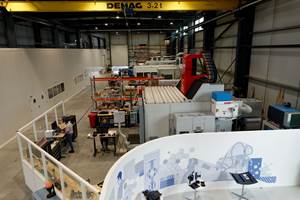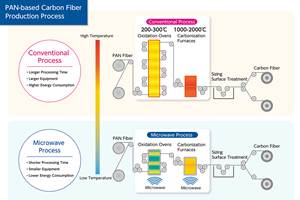From the Publisher - 4/1/2008
Better design, new materials, new processes … We live in a world where manufacturers and the consumers they serve are demanding products that not only perform better but have less negative impact on the environment in which we live. Composite materials and the manufacturers who use them are constantly adding to this
Better design, new materials, new processes …
We live in a world where manufacturers and the consumers they serve are demanding products that not only perform better but have less negative impact on the environment in which we live. Composite materials and the manufacturers who use them are constantly adding to this industry’s astounding range of options that meet both criteria. In this issue we look at a varied set of composite technologies that each provide a means to meet these demands.
Ever higher oil prices and inevitable depletion of the world’s petroleum reserves has stimulated great interest in materials derived from renewable resources. Natural reinforcements — those developed from plant fibers — have been in the industry news and well covered by CT for several years, but our “Bio-composites Update” on p. 33 takes a look at the tough issues involved in development of matrices from agricultural feedstocks, such as soy oil and corn ethanol.
It’s been a while since we did a review of microsphere reinforcements. The article on p. 28 takes a close look at these minute, ultralightweight glass and plastic “balloons,” revealing what those who use them already know: These “functional fillers” can be engineered to enhance both the performance and the processability of composite products.
Cured-in-place pipe (CIPP) liners, in a variety of composite forms, have been used for more than a decade to effect repairs on corroded underground sewer and stormwater lines without excavation and replacement. On p. 37, “Inside Manufacturing” takes a look at a rehabilitation project in which existing wastewater pipes were so badly corroded that, in places, there was no pipe left to reline. We detail the installation of a glass-reinforced composite CIPP sleeve that is designed to bear the entire structural load once supported by the original pipe. Because composite CIPP currently claims a mere 1.5 percent share of the $31 billion annual pipe rehab market, applications like this one represents a huge growth opportunity for composites.
In our final story, we provide “Engineering Insights” into the demanding developmental hurdles automakers must negotiate when they validate new composite materials in automotive body panels. The story looks at the latest step toward commercialization of the IXIS reinforced thermoplastic sandwich composite, developed by SABIC Innovative Plastics (formerly GE Plastics) and Azdel Inc. The material first appeared in the GM Volt concept car’s hood — the first thermoplastic stiff enough to overcome creep/sag in a horizontal body panel. On p. 54, we tell the story of how the material, in a hood designed for Hyundai Motors’ QarmaQ concept, was recently and successfully tested against new European and Japanese pedestrian-safety standards.
The best part? These and the other stories in this issue illustrate only a tiny fraction of the current effort in the composites market to find a more favorable balance between performance, cost and environmental impact. As composites continue to make a positive impact on this balance — as they surely will — you’ll continue to read about it here in the pages of CT.
Related Content
Plant tour: Daher Shap’in TechCenter and composites production plant, Saint-Aignan-de-Grandlieu, France
Co-located R&D and production advance OOA thermosets, thermoplastics, welding, recycling and digital technologies for faster processing and certification of lighter, more sustainable composites.
Read MoreMicrowave heating for more sustainable carbon fiber
Skeptics say it won’t work — Osaka-based Microwave Chemical Co. says it already has — and continues to advance its simulation-based technology to slash energy use and emissions in manufacturing.
Read MoreNatural fiber composites: Growing to fit sustainability needs
Led by global and industry-wide sustainability goals, commercial interest in flax and hemp fiber-reinforced composites grows into higher-performance, higher-volume applications.
Read MoreASCEND program update: Designing next-gen, high-rate auto and aerospace composites
GKN Aerospace, McLaren Automotive and U.K.-based partners share goals and progress aiming at high-rate, Industry 4.0-enabled, sustainable materials and processes.
Read MoreRead Next
Developing bonded composite repair for ships, offshore units
Bureau Veritas and industry partners issue guidelines and pave the way for certification via StrengthBond Offshore project.
Read MorePlant tour: Daher Shap’in TechCenter and composites production plant, Saint-Aignan-de-Grandlieu, France
Co-located R&D and production advance OOA thermosets, thermoplastics, welding, recycling and digital technologies for faster processing and certification of lighter, more sustainable composites.
Read More“Structured air” TPS safeguards composite structures
Powered by an 85% air/15% pure polyimide aerogel, Blueshift’s novel material system protects structures during transient thermal events from -200°C to beyond 2400°C for rockets, battery boxes and more.
Read More











.jpg;maxWidth=300;quality=90)









